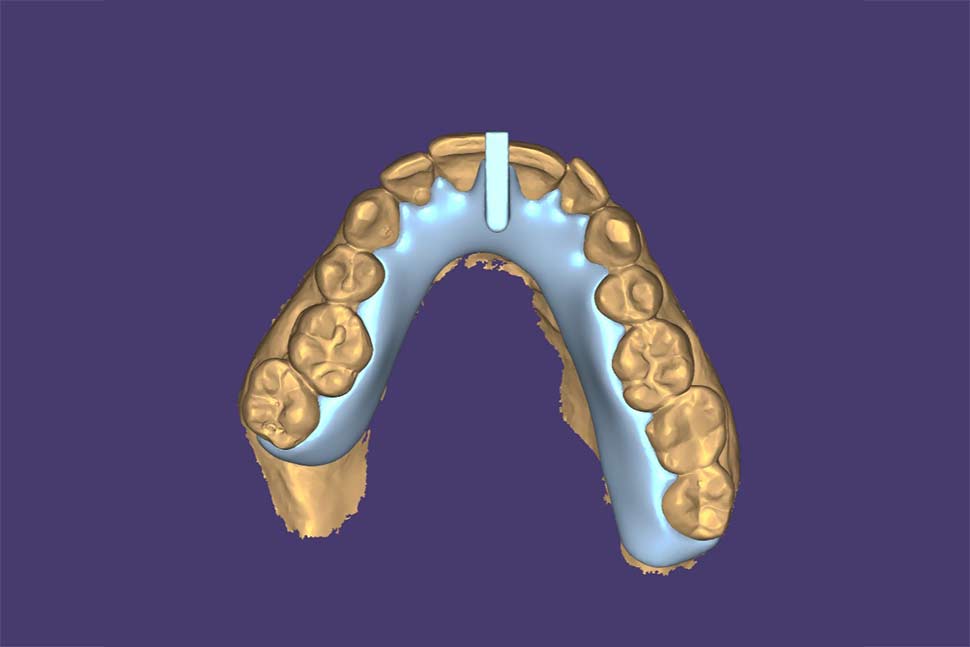At Smile Art Lab, we recognise that precision and comfort go hand in hand. A KOIS Deprogrammer supports diagnostic accuracy by allowing the jaw to relax, reducing muscular interference. Typically, wear time varies from just days to a couple of weeks enough for clear, reliable readings without undue strain.
Key Takeaways:
- The KOIS Deprogrammer often delivers diagnostic value within days to about two weeks.
- Fit and comfort directly influence whether wear can be brief or extended.
- Collaboration between the lab and the dentist ensures precise application tailored to each patient’s needs.
- Monitoring helps guide the optimal duration and subsequent restorative planning.
Understanding the KOIS Deprogrammer
The KOIS Deprogrammer, as designed by the Kois Center, aims to de-load the jaw muscles so that dentists can pinpoint centric relation crucial for restorative success. Its role in digital workflows helps in crafting restorations that sit in harmony with the patient’s physiology, KOIS Center resources.
Why Duration Matters
- Muscle relaxation: Muscles often settle within 3–7 days.
- Reproducibility: Extended use (up to two weeks) enhances accuracy if initial encounters are inconsistent.
- Patient tolerance: Shorter durations suit sensitive patients; longer wear may be necessary if jaw habits persist.
Lab-dentist synergy ensures that the data captured is relevant and reproducible.
Recommended Wear Timeframes
- Scenario Suggested Wear Duration
- First-time wearer – 3–5 days, then reassess
- Persistent muscle tension – 7–10 days helps achieve clarity
- Excessive parafunctional habits – Up to 14 days, with close monitoring
- Follow-up or adjustment phase – A few more days as needed
Note: Each dentist may customise based on patient feedback, diagnostics, and workflow.
How Smile Art Lab Supports Dentists with KOIS Cases
- Digitally-aligned precision: Our CAD/CAM and digital scanning workflows mesh seamlessly with deprogrammed impressions, see our services, enabling restorations that reflect stable neuromuscular discs.
- Collaborative case design: During Smile Design consultations, we incorporate deprogrammed models into 3D wax-ups for predictable esthetic and functional outcomes learn more on our Smile Design page.
- Streamlined logistics: Arrange case submission via our Send a Case portal fast, accurate, and fully digital.
- Expert advice: Our lab team is available to discuss optimal wear durations and interpret resulting occlusal data visit Contact Us.
Real-World Insights & Supporting Evidence
- A study published in the Journal of Prosthetic Dentistry demonstrated improved centric relation registration when muscle deprogramming lasted around 7–10 days.
- The Kois Center recommends customising the deprogrammer duration to patient comfort and functional assessment.
- Clinical feedback suggests early reassessment (within a week) improves outcomes and avoids over-wear.
Integration into Digital Dentistry
One of the most compelling advantages of incorporating the KOIS Deprogrammer is how it complements digital dentistry workflows. At Smile Art Lab, our digital protocols ensure that the occlusal position recorded with the deprogrammer transitions seamlessly into CAD/CAM design. This creates a direct line between functional data and the final restoration.
For instance:
- Digital scans of deprogrammed impressions ensure reproducible bite records.
- 3D modelling aligns esthetics with function, helping to avoid common occlusal discrepancies.
- Milled or printed prototypes can be verified against the patient’s relaxed jaw position, reducing the need for remakes or extensive chairside adjustments.
- By aligning digital innovation with neuromuscular science, the workflow not only speeds up the restorative process but also enhances accuracy something both dentists and patients appreciate.
Common Clinical Scenarios
While wear time is the focal point of deprogrammer use, clinical context also shapes outcomes. Consider the following scenarios:
Cosmetic Cases
Patients seeking smile design often present with occlusal interferences. A KOIS Deprogrammer provides clarity on whether the jaw can accommodate esthetic changes without functional compromise.
Complex Restorative Needs
In cases involving multiple crowns, bridges, or full-arch solutions, capturing a stable centric relation is critical. Deprogrammer data prevents costly adjustments later.
Bruxism or TMJ Concerns
For patients with parafunctional habits, the deprogrammer not only records occlusion but also highlights whether additional interventions such as splints are required.
How Dentists Benefit
For dentists, time and confidence are the two biggest benefits of integrating the KOIS Deprogrammer into treatment planning. Reliable bite records reduce guesswork, and reproducibility strengthens diagnostic outcomes. This ultimately means:
- Less chairside adjustment time during prosthetic placement.
- Greater predictability when managing complex restorative cases.
- Improved communication with the lab, since functional data translates clearly into design.
At Smile Art Lab, we take pride in supporting dentists throughout this journey. Whether it’s providing guidance on recommended wear durations or interpreting functional records within digital models, our team acts as a partner in every case.
Conclusion
In essence, wear time for a KOIS Deprogrammer typically spans 3 to 14 days, with most cases settling around one week. At Smile Art Lab, we collaborate with dentists to tailor the duration for diagnostic clarity, integrate digital workflows for accuracy, and ensure restorative outcomes are built on solid functional foundations. If you’d like expert guidance tailored to your cases, please get in touch with Smile Art Lab we’re here to support your lab-dentist partnership every step of the way.
FAQs
How soon can a KOIS deprogrammer achieve muscle relaxation?
Most patients experience noticeable relaxation within 3–7 days.
Can patients wear a KOIS deprogrammer overnight only?
Yes, intermittent wear (trust but verify) can still yield reliable data if comfort or lifestyle is a concern.
What if a patient reports discomfort after extended wear?
Reassess fit, adjust wear time, and consider earlier review to prevent undue strain.
Does longer wear always equal better outcomes?
Not necessarily. Beyond clarity gains, longer duration may introduce adaptation artifacts.
How does a deprogrammer’s wear time affect digital lab workflows?
Stable occlusion achieved through proper duration ensures accurate digital impressions and final prosthetics.
Is it okay to repeat deprogramming if outcomes are inconsistent?
Definitely. Reassessment with a fresh deprogrammer can refine cethe ntric position before definitive restoration.

